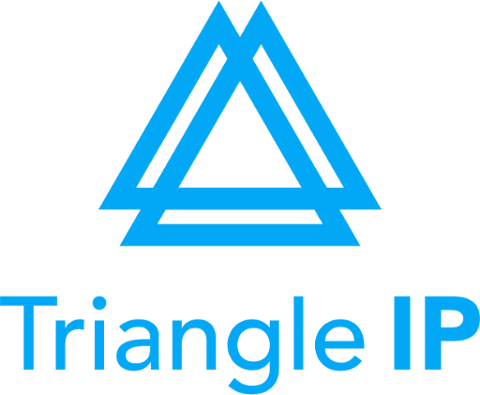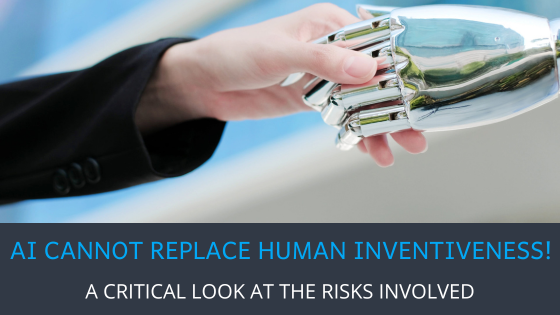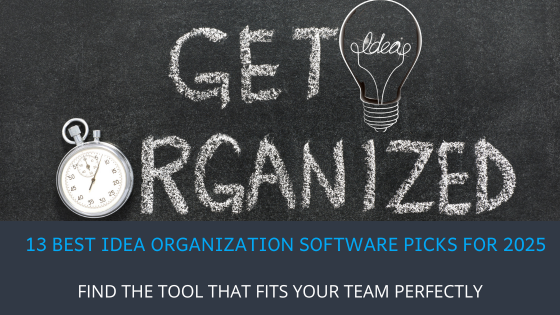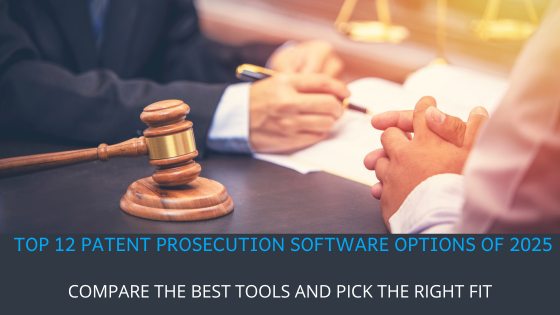While the power of generative AI is undeniably tempting for innovators seeking assistance in patent drafting, it’s crucial to pause and consider how that might unfold.
Some innovators are using AI for brainstorming, however, many are still cautious, carefully waiting for their peers to work out the bugs before they decide to use it themselves. And their hesitation is warranted—AI can hallucinate to omit, misstate, or even fabricate information, which poses significant risks in a field that demands precision.
Considering the differing schools of thought and risks involved, the USPTO recently released a new ruling, stating: if AI drafts a patent claim without significant human input, that fact must be disclosed to USPTO.
At first glance, this might seem like a straightforward solution—let AI do the work and report its use to the patent office. But is it really that simple, or does it present a more profound challenge, luring you into risky waters? Let’s find out.
5 Potential Downsides of Using AI for Patent Drafting
Remember the famous case where a monkey took a selfie and ownership was claimed by the person who had their camera snatched by the primate photographer? The court ruled that a monkey couldn’t own the copyright to a photo it accidentally took because it doesn’t have human creativity or legal understanding. Similarly, without human input, a patent’s validity can be questioned, as AI—like the monkey—can’t fulfill the creative and legal requirements for patent ownership.
For the same reason, I believe, USPTO’s inventorship guidance for AI-assisted inventions states AI can help in the invention process but cannot be an inventor. Patents are meant to reward human ingenuity, requiring significant human contribution. Just like the monkey, an AI program cannot be a human who qualifies for patents.
So, why are these rules in place?
#1 – Heightened Scrutiny by Patent Examiners
Disclosing AI’s role leads to heightened scrutiny by examiners, primarily because AI can introduce errors and generate overly broad or inaccurate claims. These inaccuracies can lead to severe consequences, including ‘document removal, disciplinary actions, or a halt in proceedings.’
This extended scrutiny can delay the already lengthy 8- to 24-month examination process, imposing financial strain on applicants—especially startups and small businesses where timely market entry is critical.
#2 – Compromised Innovation Quality
When it comes to using AI in the patent process, it excels in automating mundane tasks where human creativity is not required—like writing the summary or abstract or finding errors in drafting. Here, AI’s efficiency is undoubtedly beneficial. However, in the core activity of patent drafting—particularly the creation of ideas—the limitations of AI become starkly apparent.
AI feeds on data and this dependence often results in generating standard, obvious solutions. For instance, if an AI tool is trained on existing patent databases, it may primarily suggest changes based on previous patents, rather than fostering disruptive innovations that solve new problems not described previously. This raises a crucial question: can you truly rely on a tool that merely interprets existing historical information without adding something groundbreaking?
#3 – Misguided Investment as a Competitive Barrier
Many businesses mistakenly believe that using AI to quickly generate a large patent portfolio will create a robust barrier against competitors. However, this strategy often backfires. Eager to stay ahead, companies may rush to file numerous patents, only to find that these patents are easily circumvented by competitors because they lack originality and are mere replicas of existing ideas perhaps rearranged without any understanding of new problems that require a creative solution.
Relying on AI to speed up patent creation can waste time and money on unoriginal ideas, even if they seem authentic. AI is extremely articulate which will fool most reviewers into thinking there are actual smarts and creativity that were brought to bear in capturing the innovation. Instead of reinforcing a disruptive innovation, this overreliance on AI can underprotect true innovation, leaving businesses vulnerable in a rapidly evolving market.
#4 – Escalated Risks to Innovation Confidentiality
As the saying goes, “loose lips sink ships.” In innovation, leaky data practices can be just as damaging. A key risk of using AI in patent drafting is the threat to confidentiality. While some AI systems don’t store specific user data, many tools rely on third-party platforms that pose serious concerns.
Even if the data isn’t saved, AI models can learn from interactions. The logic and patterns absorbed during these sessions may allow the system to replicate reasoning paths, potentially enabling future users to infer or reconstruct sensitive information without ever accessing the original data. Once trained in your session with the AI, the data may be forgotten but the teaching is not.
#5 – Uncertainty Due to Evolving AI Regulations
As laws evolve, the use of AI in creating patents adds uncertainty that businesses need to handle carefully. The USPTO now requires disclosing AI’s role, which suggests more strict rules could come, possibly weakening or invalidating patents developed with AI. Disclosing that AI played a substantial part in the innovation claimed is likely to have the examination go poorly and perhaps deny a patent where human innovation could have done the same effort.
This uncertainty creates a significant risk for companies relying on AI-generated patents. Patents that seem safe today could be challenged or overturned in the future, putting businesses at risk of losing their competitive edge and facing financial losses. Given these risks, it’s important to reconsider using AI for patent drafting.
Put Caution First, Not Convenience
AI’s promise of efficiency may seem irresistible, but beneath that allure lie significant risks to the integrity of patents. While taking shortcuts with AI is tempting, patent crafting is not a place for shortcuts except for the most uncreative and routing parts of the process. Patent drafting demands ingenuity, judgment, and a deep understanding of the law—qualities no machine can replicate. Let’s not let our fascination with technology erode the very principles we rely on to protect innovation. In this critical field, human intellect isn’t just valuable here; it’s indispensable.





